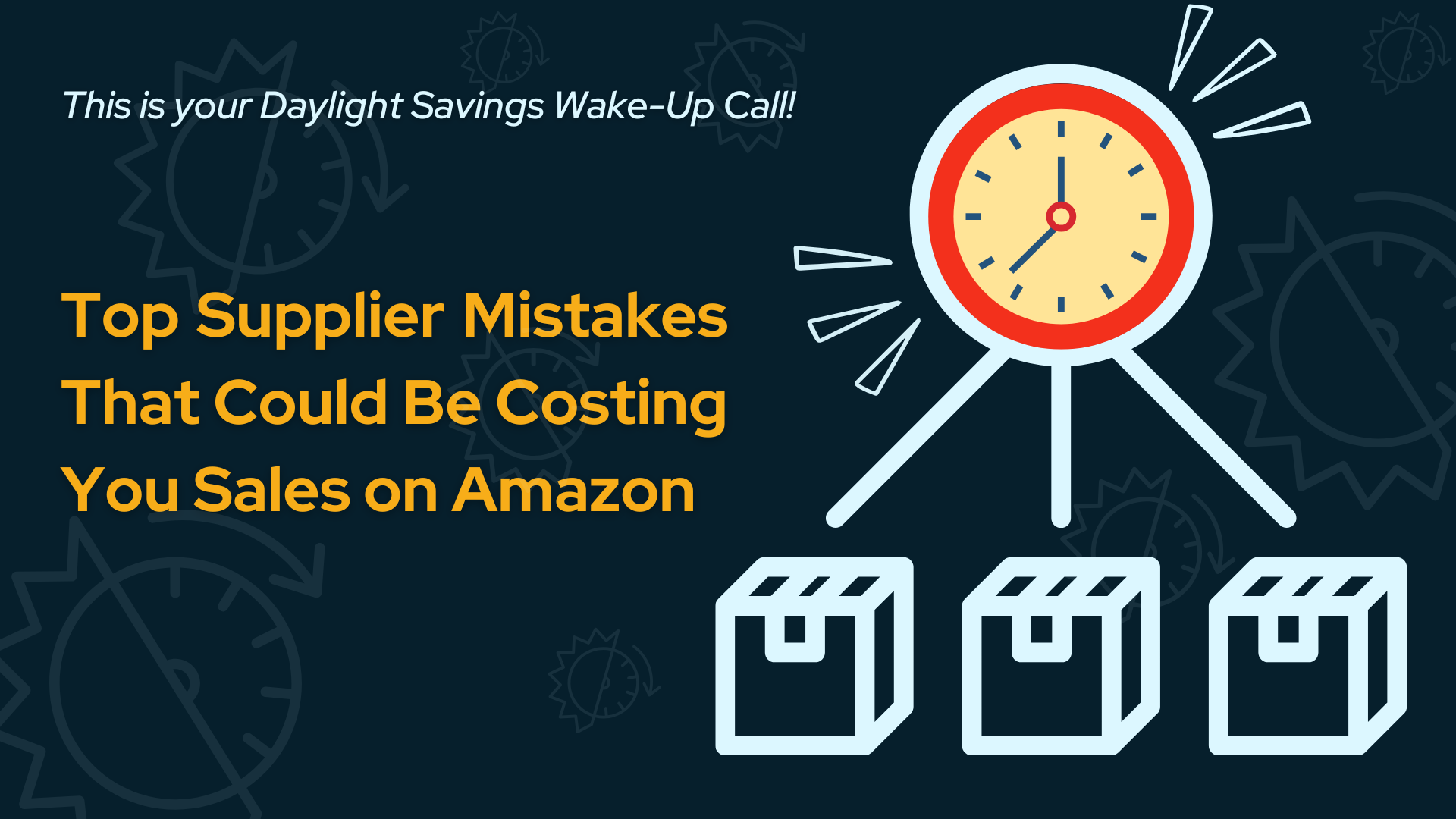A social marketing expert and "outside of the box" kind of thinker who loves brainstorm sessions on what makes a brand unique against competitors.
RebelBlog
Daylight Savings Wake-Up Call: Top Supplier Mistakes That Could Be Costing You Sales on Amazon

As we adjust our clocks for daylight savings, it’s a timely reminder to assess and adjust other critical aspects of our business. For Amazon sellers, every second counts. Suppliers are integral to the smooth operation and profitability of your e-commerce strategy, but even minor errors on their end can snowball into stockouts and other significant issues for your fulfillment. Here are the top supplier mistakes that might be costing you sales on Amazon—and how to fix them.
1. Inconsistent Inventory Management
One of the most common mistakes suppliers make is failing to manage inventory consistently. Stockouts can lead to a decrease in your product’s search ranking and leave your loyal customers disappointed. On the flip side, excess inventory can rack up storage fees, eating into your margins. To combat this, work closely with your suppliers to maintain an accurate forecast and real-time tracking.
Amazon Seller Strategies: Implement collaborative demand planning tools and integrate your inventory systems with supplier dashboards to keep stock levels optimized.
2. Late or Inaccurate Fulfillment
One of Amazon’s most common supplier mistakes is when sellers miss fulfillment deadlines or send incorrect quantities. It directly impacts your seller rating and customer satisfaction. Late shipments can lead to negative reviews, while inaccuracies can spark costly returns and refunds.
Amazon Seller Strategies: Establish clear Service Level Agreements (SLAs) and monitor supplier performance through KPIs. Having backup suppliers for critical products can also mitigate this risk.
3. Poor Quality Control
Nothing erodes customer trust faster than receiving a subpar product. Suppliers who cut corners in quality control can cause a spike in returns, negative reviews, and potential suspension of your Amazon account.
Amazon Seller Strategies: Regular audits and sample checks before products leave the supplier’s warehouse can help ensure quality standards are consistently met. Consider third-party inspection services for additional oversight.
4. Compliance and Labeling Errors
Incorrect product labeling or non-compliance with Amazon’s regulations can lead to delays, fines, or even the suspension of your listings. Suppliers who overlook these details risk derailing your entire operation.
Amazon Seller Strategies: Provide your suppliers with clear, detailed guidelines on labeling and compliance. Frequent reviews and communication can catch issues before they escalate.
5. Inflexible Response to Market Trends
Suppliers who fail to adapt quickly to market trends can stifle your ability to capitalize on new opportunities. Whether it’s slow response to changes in consumer demand or not adjusting product specs to match customer preferences, lack of agility can cost you.
Amazon Seller Strategies: Foster partnerships with suppliers that prioritize agility and innovation. Collaborative tools for trend analysis and a streamlined communication process can help you stay ahead of the curve.
Final Thoughts
As daylight savings reminds us to recalibrate, make it a point to evaluate the effectiveness of your supplier partnerships. A well-optimized supply chain can be the difference between a thriving Amazon business and one that’s struggling to keep up. By addressing these common supplier mistakes head-on, you’ll set your business up for sustainable growth and consistent sales performance.



